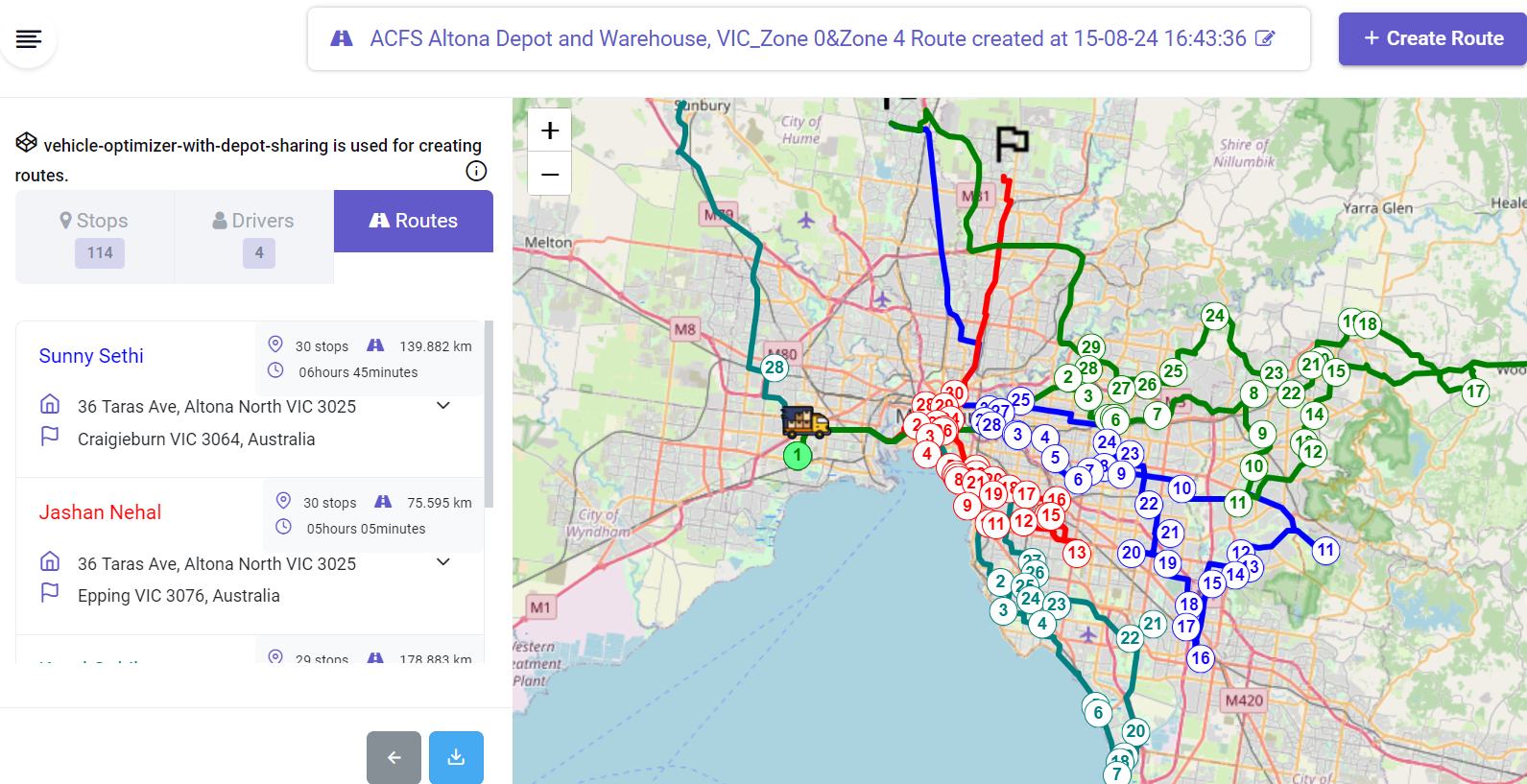
Optimiser

Route Optimisation
Onetracker Route optimisation is the process of determining the most efficient route or path for traveling from one point to another, often involving multiple stops. While using it we use various fields such as logistics, transportation, and travel planning. Our goal is to minimize travel time, costs, or distance, depending on the specific objectives.
- Distance and Time : Shortest path or quickest route.
- Cost : Minimizing fuel or operational costs.
- Traffic Conditions : Real-time traffic data to avoid congested areas.

Driver Optimisation
Onetracker driver optimisation focuses on improving the performance and efficiency of drivers, particularly in logistics, transportation, and fleet management. Our goal is to enhance productivity, reduce costs, and ensure safety while maximizing the effectiveness of each driver.
- Efficient Routing : Utilize route optimisation algorithms to provide drivers with the most efficient paths, reducing travel time and fuel consumption.
- Dynamic Adjustments : Update routes in real-time based on traffic conditions, road closures, and other factors.
- Driver Scorecards : Real-Implement scorecards to evaluate driver performance based on metrics like timesheet, breaks, in-between time in Drops and Pickup, and adherence to routes.
- Skill Development : Provide ongoing education to help drivers improve their skills and adapt to new technologies or regulations.
- Driver Assistance Apps : Provide drivers with mobile apps that offer navigation, real-time traffic updates, and communication tools.
- Timely Deliveries : Ensure drivers adhere to delivery schedules and customer commitments.
- Customer Interaction : Train drivers in effective communication with customers to enhance service quality.
Capacity Planning
OneTracker capacity planning involves forecasting and managing the resources required to meet future demand for a product or service. It is crucial in various industries, including manufacturing, IT, logistics, and service sectors. By effective capacity planning we helps ensure that resources are used efficiently, operations run smoothly, and customer demands are met without over- or under-utilization.

Capacity Types
- Fleet Capacity : The total volume or weight of goods that can be transported by the fleet.
- Warehouse Capacity : The total space available for storing goods, including pallet storage.
Capacity Planning Approaches
- Static Capacity Planning : Involves assessing fixed resources(drivers) and their ability to meet demand under normal conditions.
- Dynamic Capacity Planning : Adapts to changes in demand and operational conditions, including adjustments like adding temporary storage or increasing transport capacity.
Tools and Techniques
- Transportation Management Systems (TMS) : Optimize route planning, load management, and fleet utilization.
- Warehouse Management Systems (WMS) : Improve warehouse operations, including inventory management, space utilization, and order fulfillment.
Copyright © 2025 Onetracker Technologies Pvt. Ltd.